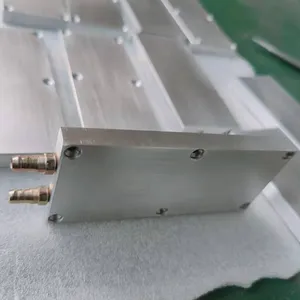Understanding Laser Heatsink: An Essential Component
Laser heatsinks are crucial components in the realm of laser technology, designed specifically to manage and dissipate heat generated during laser operation. Proper thermal management not only prolongs the life of the laser but also ensures optimal performance and efficiency. High-quality laser heatsinks help maintain stable operating temperatures, which is vital for various applications, ranging from industrial manufacturing to cutting-edge medical technologies.
Types of Laser Heatsinks
Laser heatsinks come in various forms, each tailored to fit specific system requirements. Here are some common types:
- Passive Heatsinks: Utilizes natural convection to dissipate heat without any mechanical assistance. Ideal for low-power, compact laser systems.
- Active Heatsinks: Equipped with fans or liquid cooling systems, these are designed for high-power lasers where significant heat generation is a concern.
- Thermal Interface Materials (TIM): Enhancements to improve heat transfer between the laser diode and the heatsink, ensuring better overall performance.
- Custom Heatsinks: Specifically designed to fit unique laser configurations, often made through advanced manufacturing techniques such as 3D printing.
Applications of Laser Heatsink
Laser heatsinks are utilized across a broad spectrum of industries and applications, ensuring reliability and efficiency. Consider the following:
- Industrial Manufacturing: Used in laser cutting and engraving machines where heat management is critical for precision.
- Medical Equipment: In devices such as laser surgical instruments, accurate thermal management ensures safe operation.
- Research Laboratories: Essential in high-energy laser applications and experiments where heat dissipation can affect results.
- Optical Communication: Maintains optimal performance in fiber laser systems used for transmitting data.
Features and Advantages of Laser Heatsinks
The design and functionalities of laser heatsinks contribute to their effectiveness in managing thermal issues. Here are some key features and advantages:
- High Thermal Conductivity: Most laser heatsinks are crafted from materials like aluminum or copper, which offer superior thermal conductivity, ensuring quick and efficient heat transfer.
- Lightweight Design: Modern heatsinks are designed to be lightweight, which is especially beneficial in portable laser devices.
- Customizability: Many manufacturers provide custom design options, allowing businesses to create heatsinks that perfectly fit their specific laser systems.
- Durability: Laser heatsinks are built to withstand extreme conditions, offering longevity and reliability in various operating environments.





































